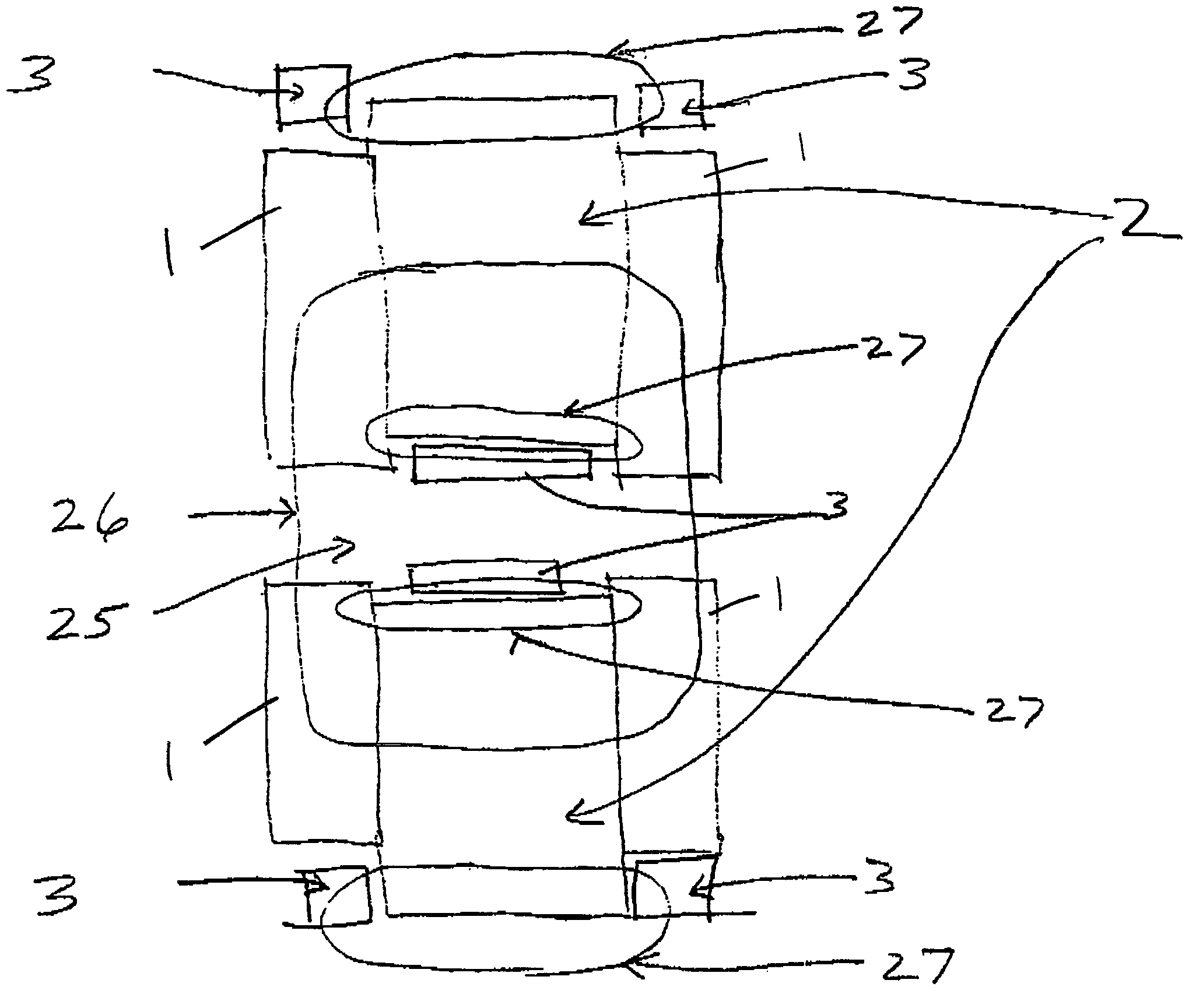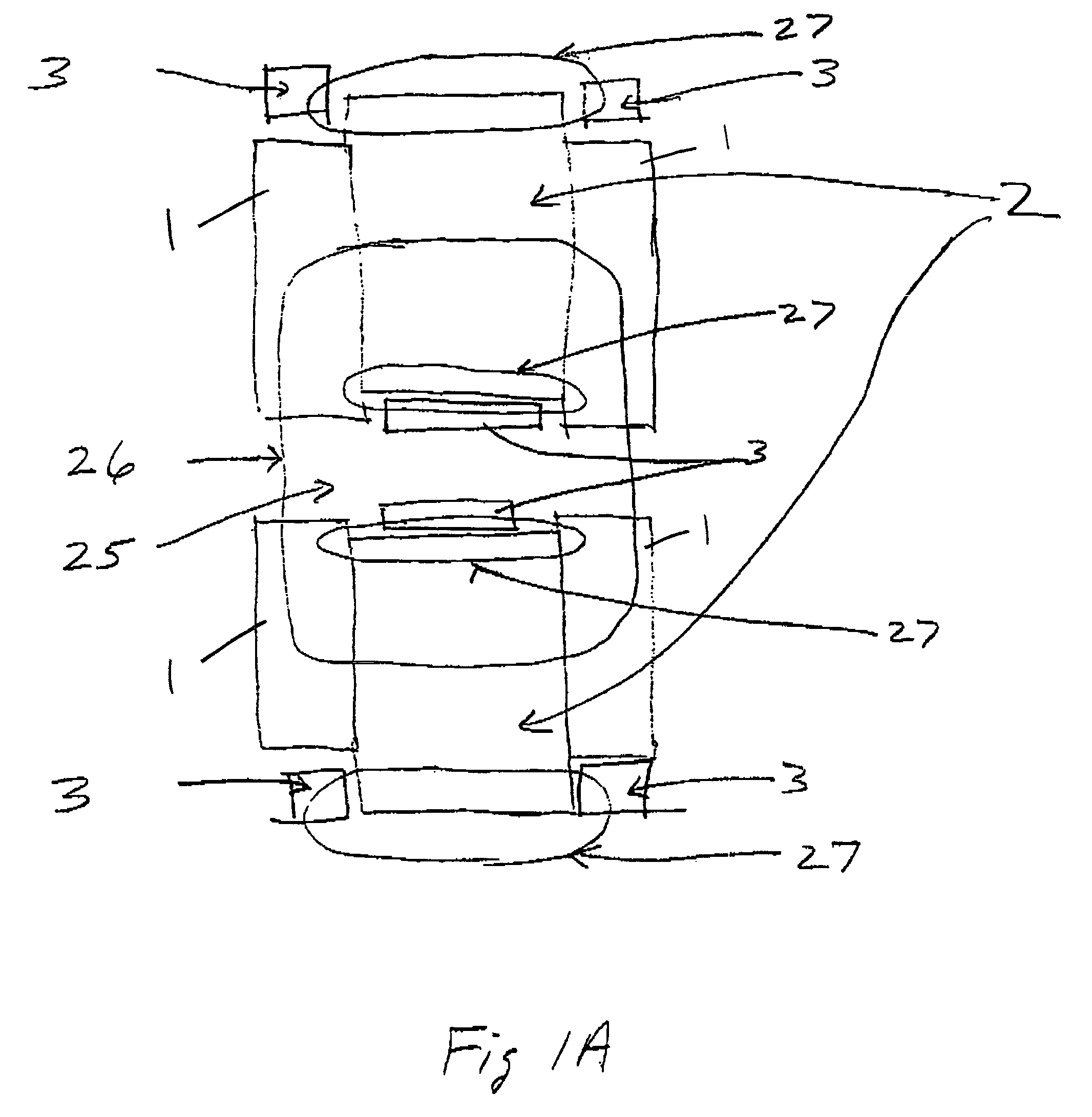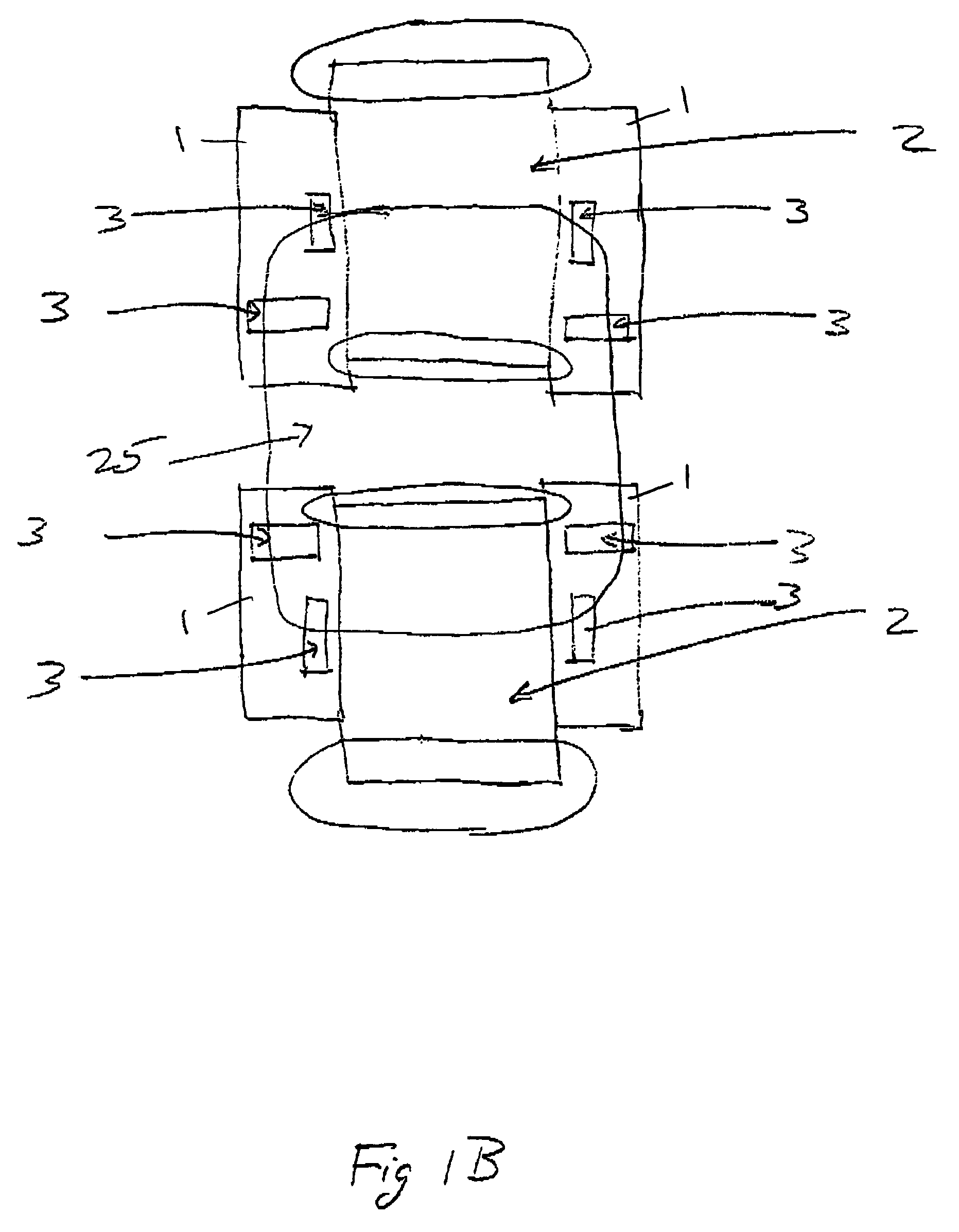Temperature correction of wigglers and undulators
a technology of undulator and temperature correction, which is applied in the direction of magnets, cores/yokes, magnets, etc., can solve the problems of motors and electronics that are required to achieve high accuracy and precision, the performance variation of fel or sr sources is not acceptable, and the apparatus usually needs high accuracy and precision. achieve the effect of simple and inexpensiv
- Summary
- Abstract
- Description
- Claims
- Application Information
AI Technical Summary
Benefits of technology
Problems solved by technology
Method used
Image
Examples
examples
[0063]Some examples are shown in reference to FIGS. 2–9 to illustrate the use of compensating materials to adjust for dB / dT and d(centerline) / dT. In these figures, the compensating materials are in a parallel flux shunt configuration. The analysis method is finite element analysis (FEA). The magnetic model is shown in FIG. 2, illustrating a half pole 1b (i.e., half of the pole as seen along the direction of the undulator as shown in FIG. 10) coupled to a half magnet 2b. Toward the “back”23 of the half magnet 2b, i.e., the side away from the mechanical centerline 22 of the undulator, a half compensating material 3b is arranged. Boundary conditions are used to provide a periodic magnetic field. The FEA is two dimensional, but the principles are easily extended to three dimensions, and three-dimensional embodiments will be explicitly described in reference to FIGS. 10–14 later.
[0064]Referring to FIG. 3, the magnetic flux lines 17 of the half magnet 2b of FIG. 2 are shown. The flux line...
PUM
 Login to View More
Login to View More Abstract
Description
Claims
Application Information
 Login to View More
Login to View More - R&D
- Intellectual Property
- Life Sciences
- Materials
- Tech Scout
- Unparalleled Data Quality
- Higher Quality Content
- 60% Fewer Hallucinations
Browse by: Latest US Patents, China's latest patents, Technical Efficacy Thesaurus, Application Domain, Technology Topic, Popular Technical Reports.
© 2025 PatSnap. All rights reserved.Legal|Privacy policy|Modern Slavery Act Transparency Statement|Sitemap|About US| Contact US: help@patsnap.com



